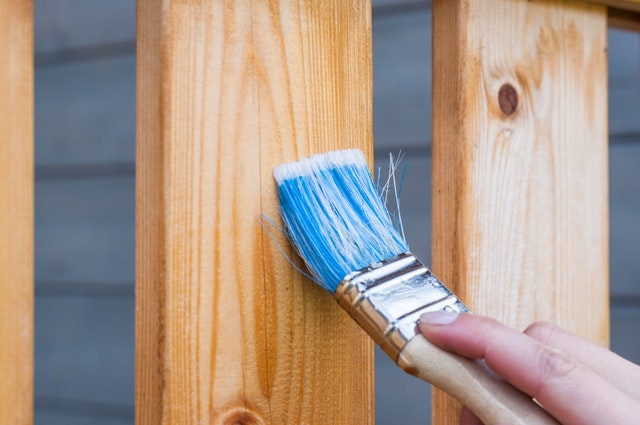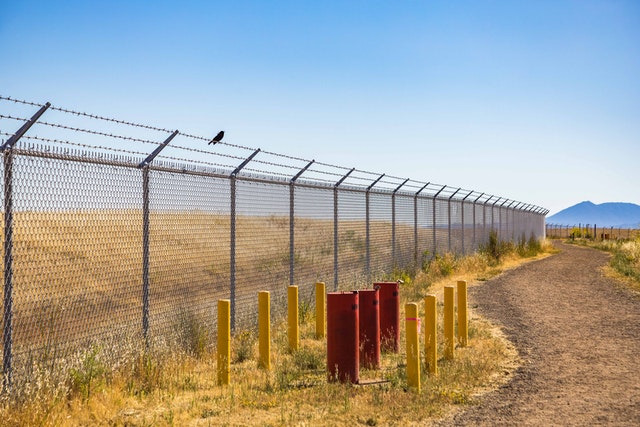Building a Fence? Do These 5 Things First
Whether your dog is a high jumper or not, it is good to establish some limits for your pet. Your house might actually look better if you added a picket fence in front. Whatever the reason, you want to build a fence around your yard. Before you start bribing your friends to help, stop and do your fence homework. A new fence adds value to your home (learn how), not causing disputes with neighbors and city code inspectors. Don’t worry. We’ve got your back. Before you dig that first post hole, follow these steps to prevent fence feuds.
5 steps to take before you install a fence
1. Have your property surveyed.
Your neighbors will not like it if you build a fence on their lawn that could create legal trouble for you. If you’re building a fence, you’ll first need to have a land survey to make sure that you’re building it on your own property. Housebound surveys are done each time a house is sold. According to an article in the San Francisco Chronicle, an old survey won’t reflect changes that could have happened to and around the property over time. A property survey is usually performed once every 5 years. If your survey is more than 5 years old, or if you haven’t gotten one recently, it’s time for a new one. You can never rely on what the next person says or what they remember. You should always get a survey done before anything is moved. A survey will tell you whether your fence is encroaching into your neighbors’ yard and, if so, by how much.
2. Learn your local fence rules.
This country has ordinances and laws regarding the construction of fences. If you live in a historic area or in a neighborhood governed by a homeowners association, you may need to follow additional rules. Your fence design might require committee approval. Find the right materials and design your own fence. Get started by reading this article and learn the basics. Grand Rapids, Michigan, does not allow chain link fencing in front yards. The front yard must be at least 30 inches tall. No taller than six feet. In the historic district, the front yard fences have to be similar to historic fencing styles.
3. Give the neighbors a heads up
After you’ve had your land surveyed, talk to your neighbors about your fence plans, because it’s important to make sure you’re not getting into any legal trouble when you build your fence. Make sure that the neighbors know you plan to build a fence before you actually do, otherwise they might not let you build it. If they’re willing to sign an easement or boundary agreement, they’re probably cool with it. Maybe they’ll love the idea and offer to help pay for it. But please don’t expect them to. If they don’t love it, there are always options for working things out or just proceeding with your plans. It’s your land, and you aren’t breaking any laws.
4. Give your neighbors the good side
Yep. Sometimes cities do require it, even if they don’t, it’s the way to go. Your fence will look better from the street. It’ll give your house a neighborhood presence, and your neighbors might even invite you over for a glass of wine. If you don’t want the icky side of your yard facing your backyard, that’s an easy fix. A good neighbor fence is one that looks the same on both sides. (More information about good neighbor fence here)
5. Plan to maintain
To properly care for your fence, you’ll need to take proper care of both sides. If you want a strong, durable fencing that will last for years to come, choose vinyl or vinyl composite. If your kids play soccer every weekend, then you probably don’t want a wooden fence that needs repainting or staining. Vinyl siding is probably a better choice than wood. It’s easier to install and doesn’t require much maintenance. More advises on how to maintain your fence here.
Prescriptive Easement
If you have property outside your property line, and your neighbor is allowed to use it outside the boundary of the property line, you may have an easement over that portion of your property. A legal type of property easement, a recreational easement, is earned by the regular use of a piece of property. While your neighbor might not be able to get a legal title to the land or be able to sell it, they may still be able to claim a legal right to use the land. Clearly, if you’re not using the property, and the landowner is using the land for a purpose that is consistent with their deed, the landowner may be able to claim an easement by prescription. This can make it difficult if you ever want to move the fence outward. There are potential problems with selling your home, which means that it may not be the best decision for you. First of all, you have to make sure you can sell your home.
Adverse Possession
An adverse possession claim can be a very effective way to block a neighbor’s property from being used in a way you don’t like. If a property trespasser (such as your neighbor who uses the small strip of land outside the fence) has exclusive and continuous use of the property for a number of years, he or she may legally claim ownership of the property. When you have a fence installed inside your property line, be sure to use your property tax statements and notice anything that changes on your tax bill. If the land suddenly goes up in value, the adverse possession can be claimed in as little as 5 years. Selling a home isn’t just about the sale; it also involves selling yourself, your home and your neighbors in one of the most significant transactions of your life. By taking control of the way you present your house to potential buyers, you are able to maximize your home’s appeal and its value for sale.






